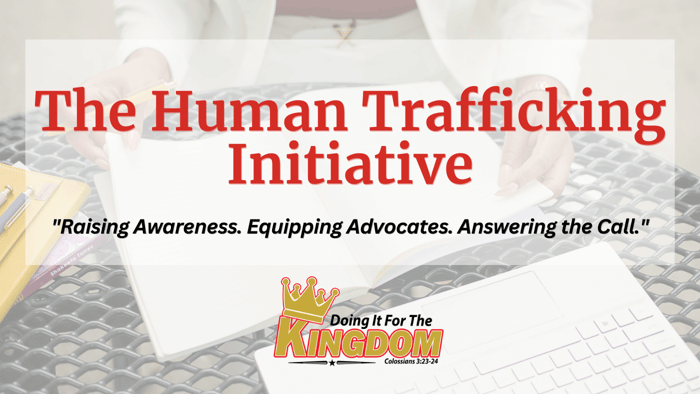Table of Contents
- The Setup: Who Was Larry Ray?
- Grooming on Campus: The Method Behind the Madness
- Financial, Emotional, and Sexual Exploitation
- Exposure and Legal Consequences
- Institutional Oversight and Cultural Silence
- Spiritual and Psychological Reflections
- Prevention: What Parents, Students, and Colleges Can Learn
- Final Thoughts
- 🔍 Want to Learn How to Spot and Stop Human Trafficking on Campuses?
- FAQs
The Sarah Lawrence Scandal: A Chilling Case of Human Trafficking on Campus
The Sarah Lawrence Scandal: A Chilling Case of Human Trafficking on Campus
 Human trafficking often conjures images of shadowy strangers and foreign borders, but the reality is that it can—and does—happen in places where safety is assumed. One such shocking case occurred at Sarah Lawrence College, a small liberal arts institution in New York known for its progressive values and tight-knit community. What happened there was not only a wake-up call for institutions of higher education but also a tragic reminder of how manipulation and psychological control can evolve into full-scale trafficking, right under the nose of administrators, friends, and faculty.
Human trafficking often conjures images of shadowy strangers and foreign borders, but the reality is that it can—and does—happen in places where safety is assumed. One such shocking case occurred at Sarah Lawrence College, a small liberal arts institution in New York known for its progressive values and tight-knit community. What happened there was not only a wake-up call for institutions of higher education but also a tragic reminder of how manipulation and psychological control can evolve into full-scale trafficking, right under the nose of administrators, friends, and faculty.
The Setup: Who Was Larry Ray?
Lawrence “Larry” Ray was not a student or faculty member. He was the father of a sophomore attending Sarah Lawrence College in 2010. After being released from prison and reportedly without a place to stay, Ray moved into his daughter Talia’s dorm room in the Slonim Woods residence hall—an arrangement somehow permitted by campus authorities.
At first, Ray seemed like a charismatic, intellectual father figure to a group of impressionable students. He shared meals with them, lectured on philosophy and government conspiracies, and positioned himself as a protector and truth-teller. But behind this façade was a calculated predator whose goal was total control—psychological, financial, and eventually sexual.
Grooming on Campus: The Method Behind the Madness
Once Ray embedded himself into campus life, he began the slow, insidious process of psychological manipulation. He held “therapy sessions” with his daughter’s roommates, where he would probe their personal histories, traumas, and insecurities. Under the guise of helping them achieve “clarity,” he would isolate them from their families, sow distrust in their relationships, and break down their mental and emotional defenses.
This process is classic grooming behavior. Ray used emotional dependency, gaslighting, coercion, and sleep deprivation to create trauma bonds. Some students were convinced they had caused damage to his personal property or hurt his health. They were made to pay thousands—some even took out loans or emptied their parents’ savings—just to “make amends.”
In one instance, he coerced a young woman, Claudia Drury, into prostitution under the false narrative that she owed him money for wrongdoings. Between 2011 and 2017, she was trafficked in New York City hotels and forced to hand over the money she earned to Ray, amounting to more than $500,000.
Financial, Emotional, and Sexual Exploitation
By the time the situation was exposed, Ray had:
Moved multiple students into a Manhattan apartment where he lived with them,
Isolated them from their families,
Convinced them they had harmed him and owed him large financial debts,
Collected over $1 million in coerced payments, and
Sexually trafficked at least one student.
He documented many of his “interrogations” on video, often psychologically torturing the students for hours. These recordings were later used as evidence in court, showcasing the extent of control he had over them.
Exposure and Legal Consequences
The case came to light in 2019 when The New York Magazine publication The Cut released a groundbreaking exposé titled “The Stolen Kids of Sarah Lawrence”. The piece was based on extensive interviews with survivors and laid out the timeline and methods of Ray’s abuse. It went viral, sparking national outrage and a federal investigation.
Ray was arrested in 2020 and later charged with:
Sex trafficking,
Extortion,
Forced labor,
Racketeering,
Money laundering, and more.
As reported by NPR, Larry Ray was found guilty on all counts in April 2022 and sentenced to 60 years in federal prison in January 2023.
Institutional Oversight and Cultural Silence
Many readers have asked: How did this happen on a college campus? How did an adult man live in a women’s dormitory for months without university intervention? Why were there no checks on who influenced students' mental and physical well-being?
These questions highlight a painful truth: campuses are not immune to trafficking. In fact, they may be more vulnerable due to:
Students' increasing independence and distance from parental oversight,
Lack of trauma-informed training among resident advisors and staff,
Gaps in mental health services,
A culture that may avoid "getting involved" in peers' private matters.
Sarah Lawrence College has since claimed to have strengthened its residential policies and increased student wellness education. But for many, those changes came far too late.
Spiritual and Psychological Reflections
This case is a disturbing example of how trauma, identity confusion, and broken trust can open the door to exploitation. For Christian counselors, therapists, and life coaches, this incident offers several takeaways:
The Importance of Discernment: Ray cloaked his abuse in intellectualism and faux therapy. Christian leaders must discern the difference between proper mentorship and manipulation.
The Danger of Isolation: The enemy’s tactics—spiritually and psychologically—involve isolating the vulnerable. We must watch for signs of emotional and physical withdrawal in those we serve.
Healing from Psychological Bondage: Many survivors of trafficking, like Ray’s victims, experience trauma bonds and extreme shame. Their healing journeys require patience, faith-based trauma care, and truth-telling rooted in love and dignity.
Prevention: What Parents, Students, and Colleges Can Learn
For Parents:
Ask questions about your child’s roommates, guests, and mental health.
Watch for sudden financial changes, behavior shifts, or secrecy.
Teach your child about manipulation and trauma bonding.
For Colleges:
Vet all non-students living or spending frequent time on campus.
Provide trauma-informed training to RAs and counselors.
Make it easy for students to anonymously report suspicious behavior.
For Students:
Be cautious of anyone who demands secrecy or isolates you from your support system.
Don’t mistake manipulation for mentorship.
If something feels off, trust your gut—and ask for help.
Final Thoughts
The Sarah Lawrence trafficking case is not just a bizarre outlier—it’s a mirror reflecting the deep vulnerabilities that exist in our education systems. As believers and mental health professionals, we must pray for those affected and equip ourselves with the tools and knowledge to intervene, support, and educate.
This case demands more than sympathy. It calls for action, awareness, and reform.
🔍 Want to Learn How to Spot and Stop Human Trafficking on Campuses?
This heartbreaking case is not isolated, so we’re committed to raising awareness, educating communities, and equipping leaders like you to take action.
📖 Want to go deeper?
Check out my book, God’s Call to Justice: The Spiritual Battle Against Human Trafficking, and discover how faith, advocacy, and practical tools unite to fight exploitation from a biblical lens.
💬 Share this blog, tag a friend, and let’s keep the conversation going.
Together, we can do it for the Kingdom.
FAQs
1. How was Larry Ray able to live in a college dorm without university intervention?
Larry Ray moved into his daughter’s dorm at Sarah Lawrence College in 2010 under the guise of needing temporary housing. At the time, the college did not have clear policies or enforcement around non-student visitors in residence halls. This oversight allowed him to manipulate and control students over time without immediate consequences.
2. What makes this case an example of human trafficking?
Though it didn’t begin with force or abduction, Ray used psychological coercion, manipulation, and debt bondage to control his victims. He forced at least one student into prostitution and took the money she earned. This meets the legal definition of sex trafficking through coercion, as defined by the Trafficking Victims Protection Act.
3. Were any of the students held physically against their will?
No. One of the most disturbing aspects of this case is that the students appeared to be there by choice. However, Ray’s psychological manipulation, trauma bonding, isolation, and financial control made it incredibly difficult for them to leave—an example of invisible chains that bind victims in trafficking situations.
4. What was the college’s response after the case became public?
After the New York Magazine article exposed the case in 2019, Sarah Lawrence College claimed to review and update its residential policies. They stated they had increased training for student life staff and emphasized campus safety. However, many critics argued that the institution’s delayed response lacked urgency and oversight.
5. What can I do if I suspect someone is being trafficked or manipulated on a college campus?
If you believe someone is being exploited, report it to campus authorities, local law enforcement, or contact the National Human Trafficking Hotline at 1-888-373-7888 or text “HELP” to 233733. Do not confront the suspected trafficker directly—doing so could endanger both you and the victim. Always prioritize safety and seek help from trained professionals.



